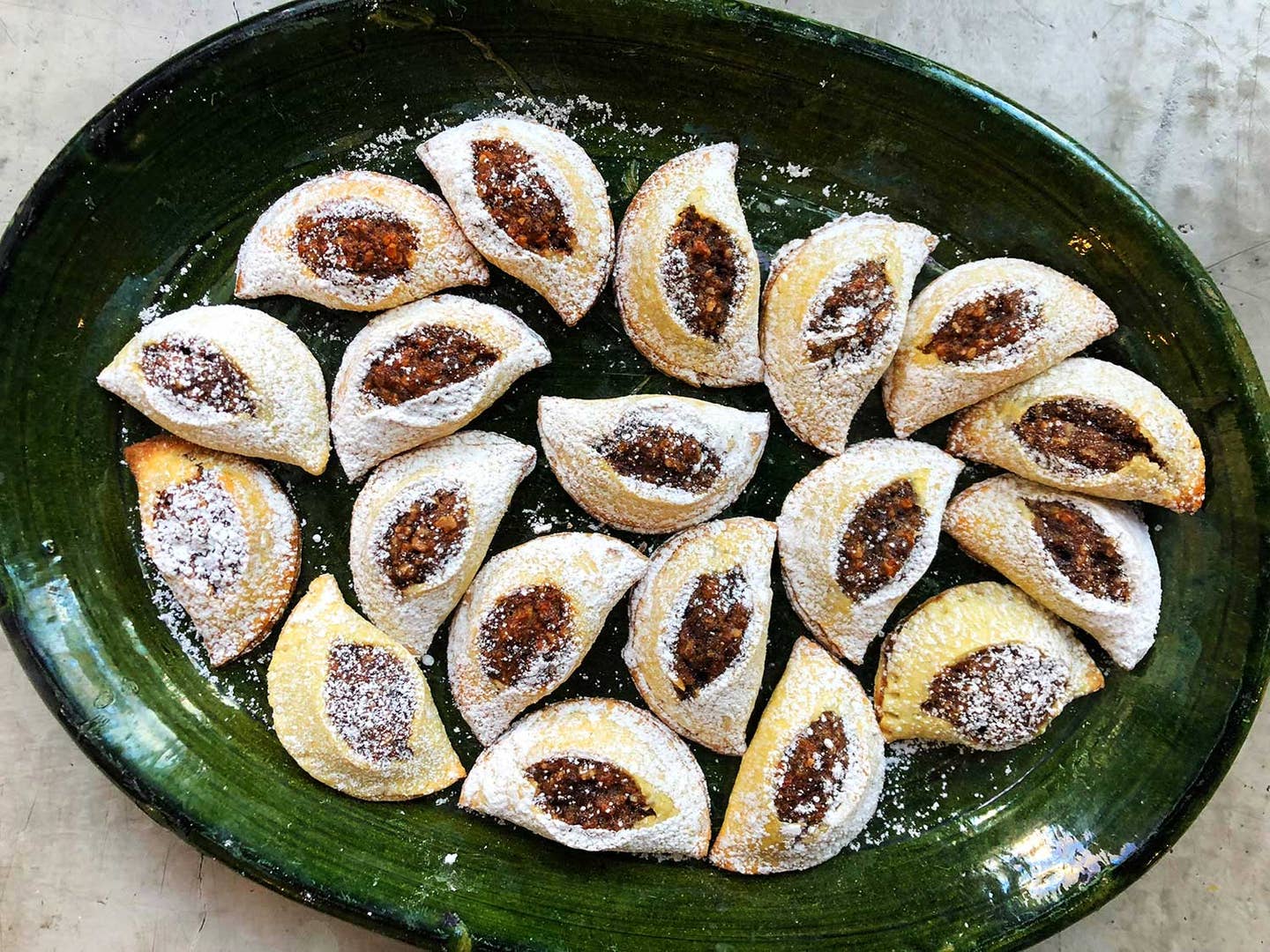
Chocolate-Meat Cookies Are This Sicilian Town’s Specialty
‘Mpanatigghi are just as tricky to pronounce as they are to understand
Amongst the mystic pathways of Modica in southern Sicily, the streets decked with Baroque architecture and gothic vibes, Willy Wonka-esque chocolate factories line the main drag. Inside, makers turn out a rich, unique style of cold-processed chocolate—a technique introduced to Modica by the Spaniards in the 1600's. Because of its prevalence in the region, locals tend to think of their town as the lesser-sung chocolate capital of Europe.
Stocked among the quirky offerings at the nearby bakeries—like the town's popular Antica Dolceria Bonajuto or Caffe' Dell'Arte—you'll often find an unassuming array of half-moon cookie that, of course, appear to have chocolate filling peeking out of their centers. Bite in and you'll notice something that doesn't taste like chocolate: the robust flavors of baking spices and a hint of ground beef tucked into the chocolate filling. These are the region's puzzling meat cookies called 'Mpanatigghi.
In name and form, 'Mpanatigghi (pronounced mm-pahn-nah-tee-ghee in local dialect) appears to be a relative of the Spanish-style empanada, the filled turnover that often contains beef. Likely, this cookie formed in its likeness came from the influence of the Spanish in Modica during the 17th century. There are conflicting legends regarding the purpose and origin of the cookies, but the most accepted account has to do with the period of Lent when meat was prohibited. The chocolate served as a decoy that supposedly allowed partakers to sneak in a little meat through these carb-enveloped, sugar-dusted mules. Chocolate was thought to be chosen as the decoy for these forbidden treats not only for its deceptive power, but also for its ability to help preserve foods for longer.
“The marriage of chocolate and meat was [probably] born from [the chocolate’s ability to] aid in food preservation,” says Pierpaolo Ruta, the heir of six generations of chocolatiers at Bonajuto, one of Modica's historic purveyors of artisanal chocolate. This is thanks to the cacao butter contained within. Consequentially, these cookies were also considered a perfect energy bar of sorts—full of protein, fat, and carbohydrates—to sustain those on religious pilgrimages.
“Certainly over the course of history, la tradition of 'Mpanatigghi has evolved, in favor of refining the original recipe,” says Ruta. Deviations have involved the addition of egg, almonds, spices like ground cinnamon and nutmeg. In flavor and texture, many of the current adaptations have qualities similar to a Fig Newton.
There are examples of chocolate in savory foods throughout Sicily such as chocolate in caponata's original recipe, ancient liepru n'ciucculattatu (rabbit or hare cooked in chocolate) from Modica, or le liccumie, a similar cookie but for vegetarians with eggplant replacing meat. Traces of consumption of a chocolate meat torta or cake have been found in the Benedictine Monastery of San Nicolò l'Arena in Catania, Sicily, documented by historian Marco Blanco in his book I Quaderni di Archestrato Calcentero which charts Sicilian food history. But, says Aurelio Iacono of Caffe dell'Arte: "The half-moon chocolate meat cookie is an exclusively Modican product and anything else attempting to resemble 'Mpanatigghi outside town is only an attempt at imitation."
Keep Reading
Continue to Next Story










